The name of this Wetherspoon pub recalls the town’s origin as an ancient settlement, called Lantokay. In time, the name was forgotten, and the settlement was called ‘Leigh’ and then ‘Street’. It was the early Christian settlement, at Glastonbury, which attracted several Celtic saints to this area. It was one such saint who settled on the higher, drier ground above the marshes, where Street Church now stands, and founded Lantokay – the Ilan (or sacred enclosure) of Kay.
A plaque documenting the history of The Lantokay.
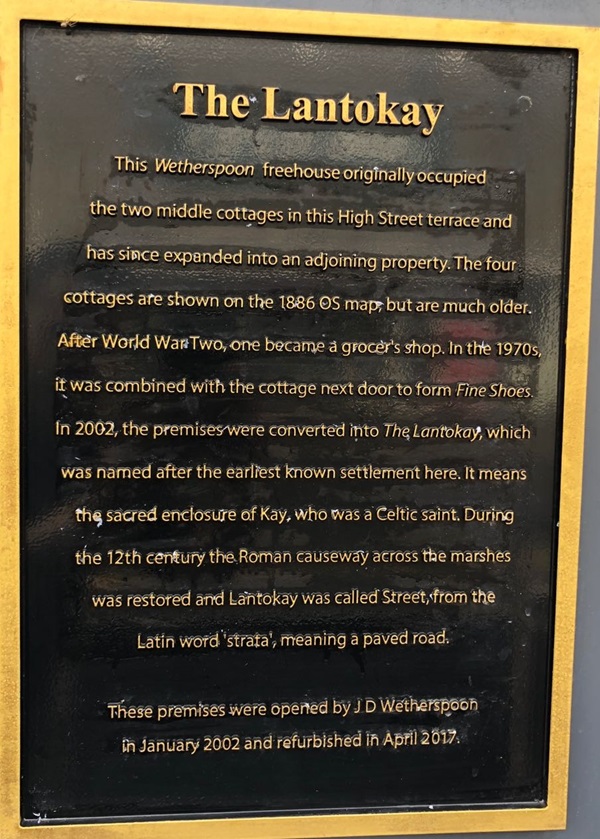
The text reads: This Wetherspoon freehouse originally occupied the two middle cottages in this High Street terrace and has since expanded into an adjoining property. The four cottages are shown on the 1886 OS map, but are much older. After World War Two, one became a grocer’s shop. In the 1970s, it was combined with the cottage next door to form Fine Shoes. In 2002, the premises were converted into The Lantokay, which was named after the earliest known settlement here. It means the sacred enclosure of Kay, who was a Celtic saint. During the 12th century the Roman causeway across the marshes was restored and Lantokay was called Street, from the Latin word ‘strata’, meaning a paved road.
These premises were opened by J D Wetherspoon in January 2002 and refurbished in April 2017.
Prints and text about war.
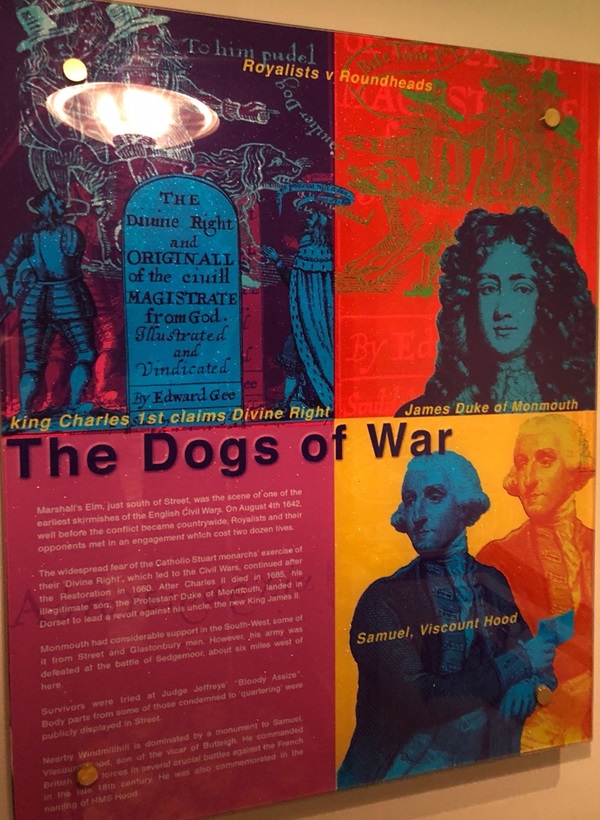
The text reads: Marshall’s Elm, just south of Street, was the scene of one of the earliest skirmishes of the English Civil Wars. On August 4 1642, well before the conflict became countrywide. Royalists and their opponents met in an engagement which cost two dozen lives.
The widespread fear of the Catholic Stuart monarchs’ exercise of their ‘Divine Right’, which led to the Civil Wars, continued after the Restoration in 1660. After Charles II died in 1685, his illegitimate son, the Protestant Duke of Monmouth, landed in Dorset to lead a revolt against his uncle, the new King James II.
Monmouth had considerable support in the South-West, some of it from Street and Glastonbury men. However, his army was defeated at the battle of Sedgemoor, about six miles west of here.
Survivors were tried at Judge Jeffreys’ ‘Bloody Assize’. Body parts from some of those condemned to ‘quartering’ were publicly displayed in Street.
An illustration and text about the raid on Le Havre.
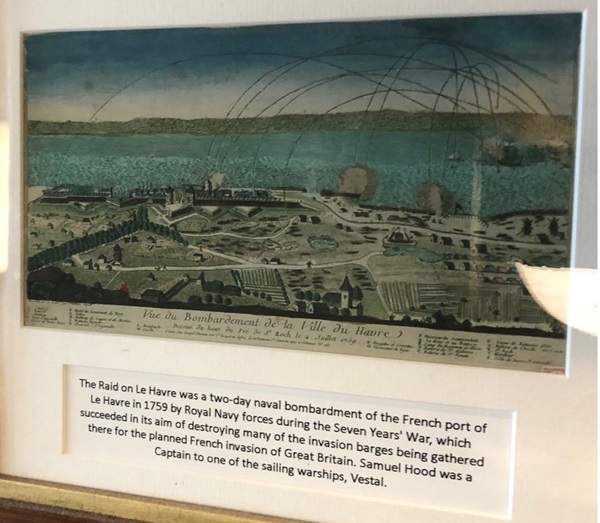
The text reads: The Raid on Le Havre was a two day naval bombardment of the French port of Le Havre in 1759 by Royal Navy forces during the Seven Years’ War, which succeeded in its aim of destroying many of the invasion barges being gathered there for the planned French invasion of Great Britain. Samuel Hood was a captain to one of the sailing warships, Vestal.
An illustration and text about Corsica.
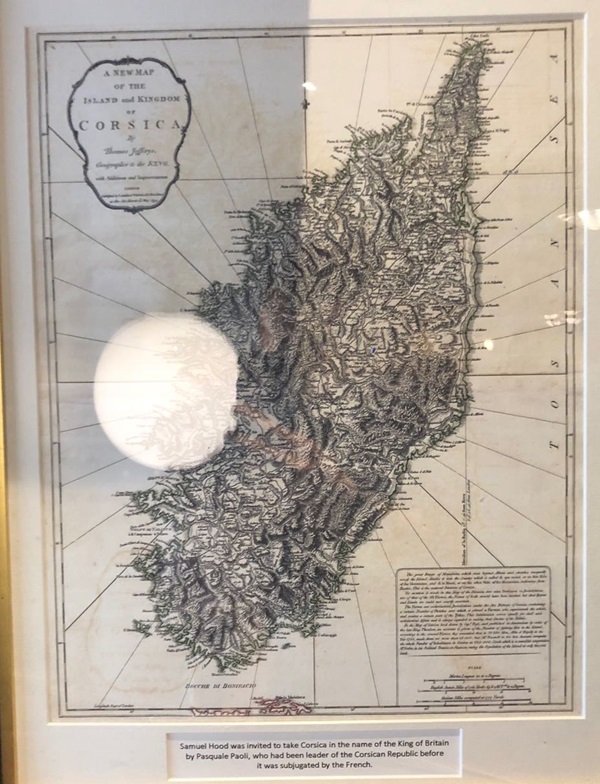
The text reads: Samuel Hood was invited to take Corsica in the name of the King of Britain by Pasquale Paoli, who had been leader of the Corsican Republic before it was subjugated by the French.
An historical map of Somerset.
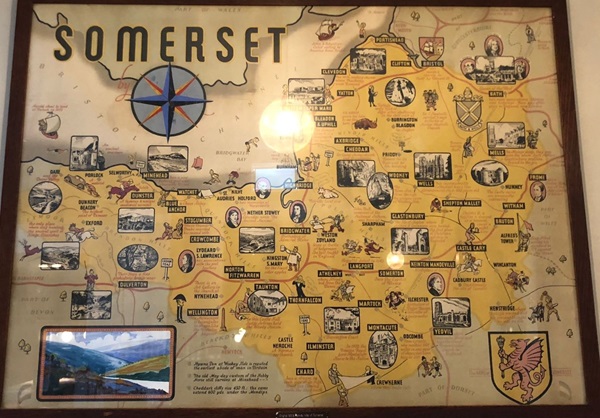
Photographs and text about John Hinde.
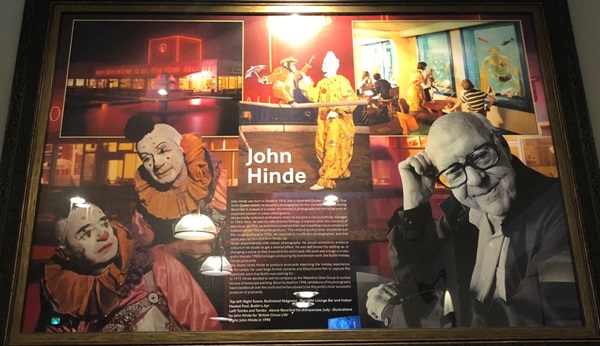
The text reads: John Hinde was born in Street in 1916, into a close-knit Quaker community. True to his Quaker beliefs, he became a photographer for the civil defence forces during World War II, instead of a soldier. His interest in photography led him to become an important pioneer in colour photographs.
Hinde briefly switched professions when he became a circus publicity manager in 1944. Here, he met his wife Antoina Falnoga, a trapeze artist who was part of the circus. In 1954, he and Antoina started their own travelling circus company in Ireland named ‘The John Hinde Show’. The venture quickly failed and Hinde quit the circus business in 1956. He returned to his life as a photographer, and that same year, he founded John Hinde Ltd.
Hinde experimented with colour photography. He would sometimes enhance colours in his studio to get a desired effect. He was well known for setting up, or changing a scene so that it would fit his strict style. His work was a huge success, and in the late 1960s he began producing his best known work, the Butlin Holiday camp postcards.
Billy Butlin hired Hinde to produce postcards depicting the holiday experience at his camps. He used large format cameras and Ektachrome film to capture the optimistic tone that Butlin was looking for.
In 1972, Hinde decided to sell his company to the Waterford Glass Group to pursue his love of landscape painting. Since his death in 1998, exhibitions of his photography have travelled all over the world and he has proved to be the world’s most successful producer of postcards.
Top left: Night scene, Butlinland Skegness
Top right: lounge Bar and indoor heated pool, Butlin’s Ayr
Left: Tambo and Tambo
Above: Reco and his chimpanzee, Judy – illustrations by John Hinde for ‘British Circus Life’
Right: John Hinde in 1990.
Prints and text about Sharpham Park.
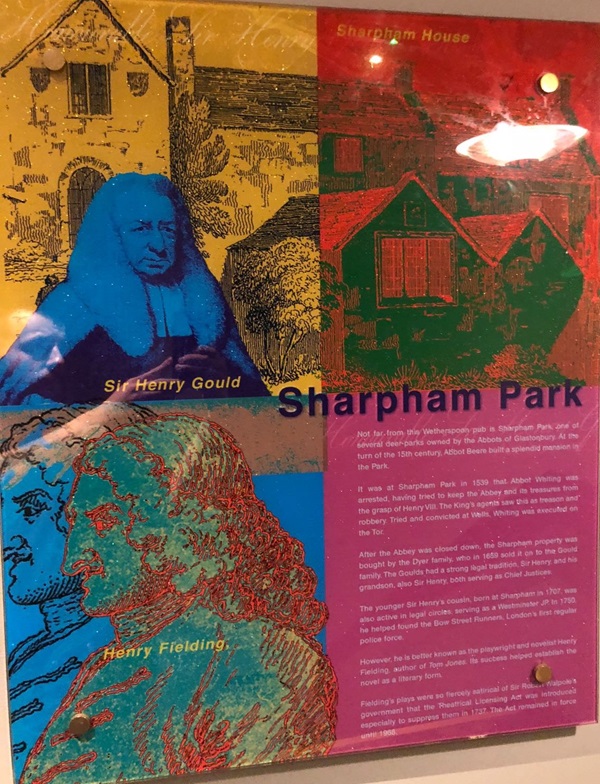
The text reads: Not far from this Wetherspoon pub is Sharpham Park, one of several deer-parks owned by the Abbots of Glastonbury. At the turn of the 15 century, Abbot Beere built a splendid mansion in the Park.
It was at Shapham Park in 1539 that Abbot Whiting was arrested, having tried to keep the Abbey and its treasures from the grasp of Henry VIII. The King’s agents saw this as treason and robbery. Tried and convicted at Wells, Whiting was executed on the Tor.
After the Abbey was closed down, the Sharpham property was bought by the Dyer family, who in 1659 sold it on to the Gould family. The Gould’s had a strong legal tradition, Sir Henry and his grandson, also Sir Henry, both serving as Chief Justices.
The younger Sir Henry’s cousin, born at Sharpham in 1707, was also active in legal circles, serving as a Westminster JP. In 1750 he helped found the Bow Street Runners, London’s first regular police force.
However, he is better known as the playwright and novelist Henry Fielding, author of Tom Jones. Its success helped establish the novel as a literary form.
Fielding’s plays were so fiercely satirical of Sir Robert Walpole’s government that the Theatrical Licensing Act was introduced especially to suppress them in 1737.
Photographs and text about Laurence Housman.
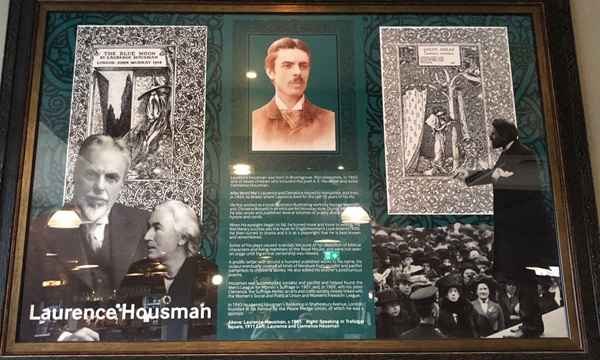
The text reads: Laurence Housman was born in Bromsgrove, Worcestershire, in 1865, one of seven children who included the poet AE Housman and writer Clemence Housman.
After World War I, Laurence and Clemence moved to Hampshire, and then, in 1924, to Street, where Laurence lived for the last 35 years of his life.
He first worked as a book illustrator illustrating works by George Meredith and Christina Rossetti in an intricate Art Nouveau style. During this period, he also wrote and published several volumes of poetry and a number of hymns and carols.
When his eyesight began to fail, he turned more and more to writing. His first literary success was the novel An Englishwoman’s Love Letters (1900). He then turned to drama and it is a playwright that he is best known and remembered.
Some of his plays caused scandals because of his depiction of biblical characters and living members of the Royal House, and were not seen on stage until theatrical censorship was relaxed.
A prolific writer with around a hundred published works to his name, his output eventually covered all kinds of literature from socialist and pacifist pamphlets to children’s stories. He also edited his brother’s posthumous poems.
Housman was a committed socialist and pacifist and helped found the Men’s League for Women’s Suffrage in 1907, and, in 1909, with his sister Clemence, the Suffrage Atelier, an arts and crafts society closely linked with the Women’s Social and Political Union and Women’s Freedom League.
In 1945 he opened Housman’s Bookshop in Shaftesbury Avenue, London, founded in his honour by the Peace Pledge Union, of which he was a sponsor.
Above: Laurence Housman, c1885
Right: Speaking in Trafalgar Square, 1911
Left: Laurence and Clemence Housman.
Text about Mulberry.
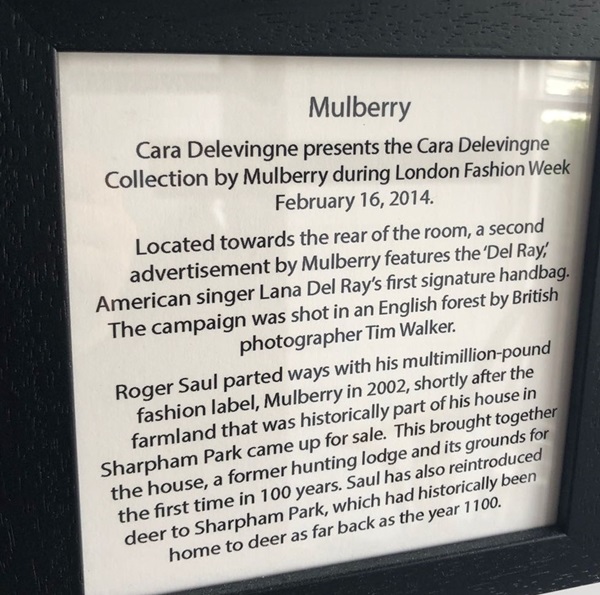
The text reads: Cara Delevingne presents the Cara Delevingne Collection by Mulberry during London Fashion Week, February 16, 2014.
Located towards the rear of the room, a second advertisement by Mulberry features the ‘Del Ray’, American singer Lana Del Ray’s first signature handbag. The campaign was shot in an English forest by British photographer Tim Walker.
Roger Saul parted ways with his multimillion-pound fashion label, Mulberry in 2002, shortly after the farmland that was historically part of his house in Sharpham Park came up for sale. This brought together the house, a former hunting lodge and its grounds for the first time in 100 years. Saul has also reintroduced deer to Sharpham Park, which had historically been home to deer as far back as the year 1100.
A photograph and text about Quaker fashion.
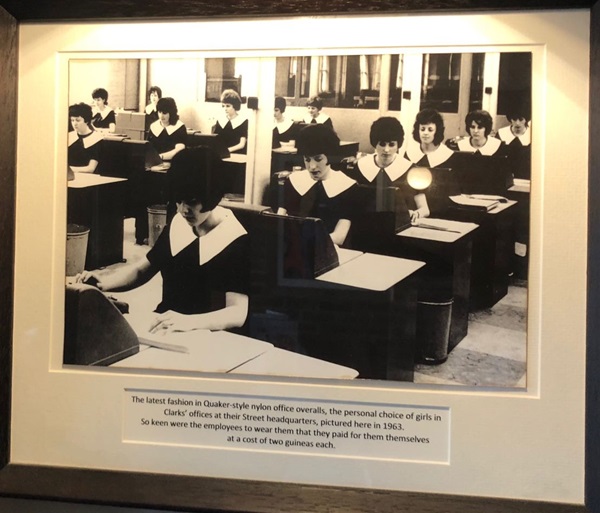
The text reads: The latest fashion in Quaker-style nylon office overalls, the personal choice of girls in Clarks’ offices at their Street headquarters, pictured here in 1963.
So keen were the employees to wear them that they paid for them themselves at a cost of two guineas each.
A photograph of Street Clock Tower, 1896.
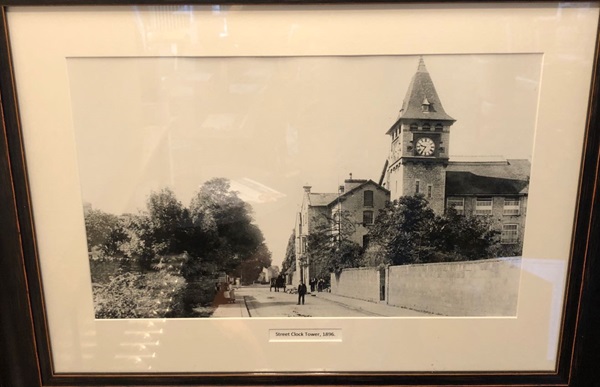
A photograph of Street High Street, in 1896.
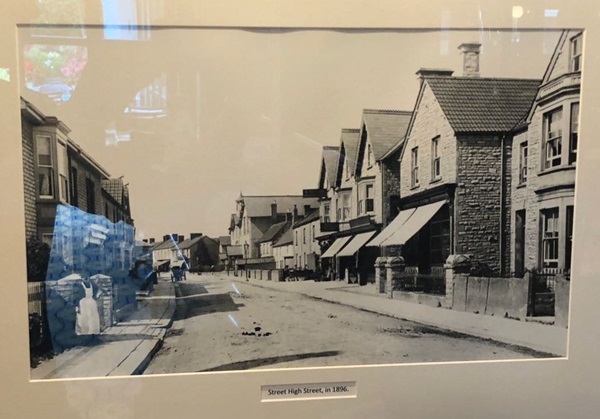
A church window depicting Saint Kea, at the Church of St Feock, near Truro, Cornwall.
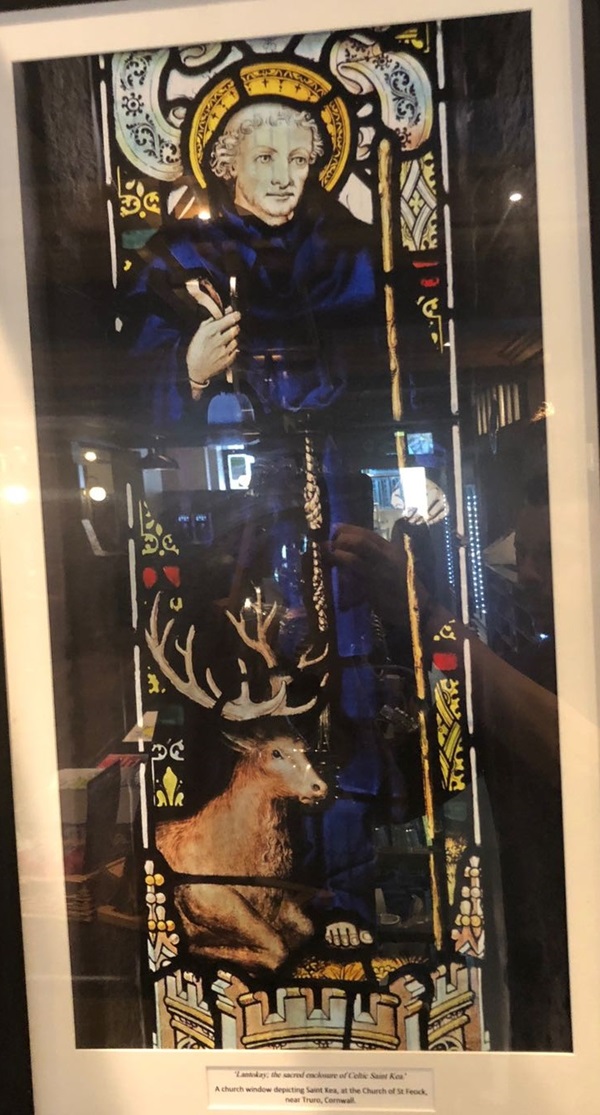
A photograph and text about Edwin Edwards.
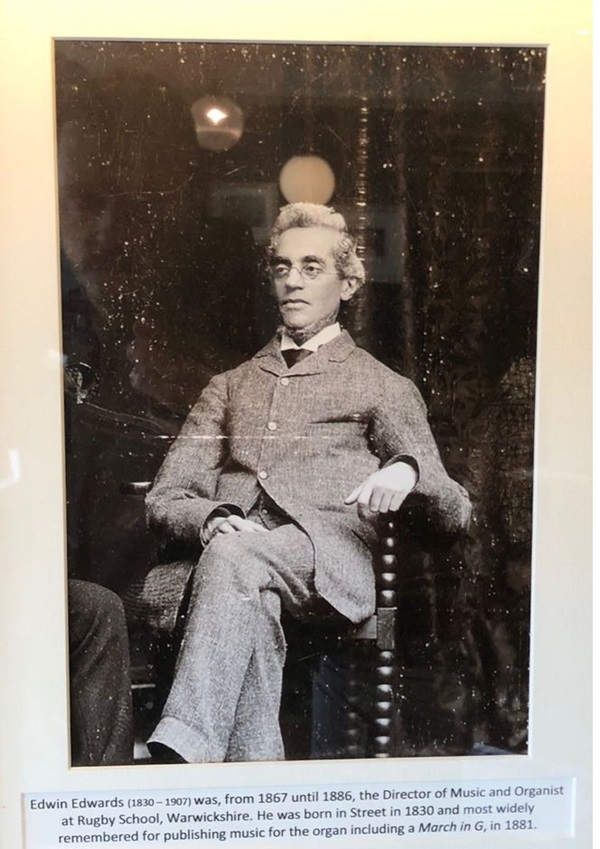
The text reads: Edwin Edwards (1830-1907) was, from 1867 until 1886, the Director of Music and Organist at Rugby School, Warwickshire. He was born in Street in 1830 and most widely remembered for publishing music for the organ including a March in G, in 1881.
A map of Middle Earth.
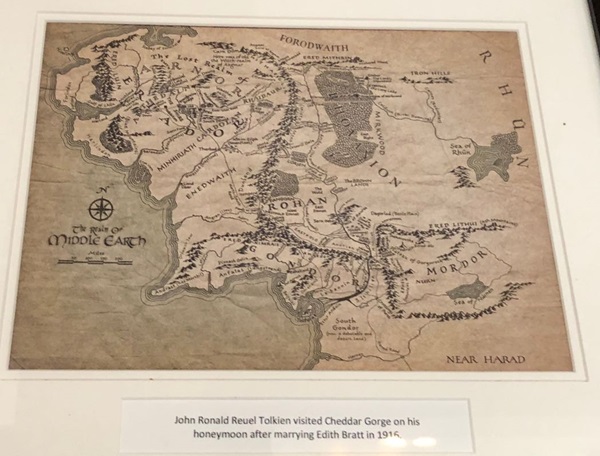
John Ronald Reuel Tolkien visited Cheddar Gorge on his honeymoon after marrying Edith Bratt in 1916.
An illustration and text about the Glittering Caves.
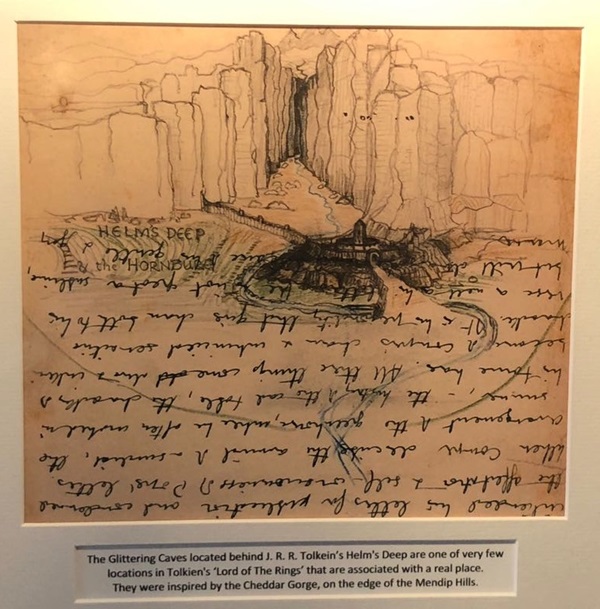
The text reads: The Glittering Caves located behind JRR Tolkein’s Helm’s Deep are one of very few locations in Tolkien’s Lord of the Rings that are associated with a real place. They were inspired by the Cheddar Gorge, on the edge of the Mendip Hills.
A village shop at Cheddar Gorge in the Mendip Hills, c1926.
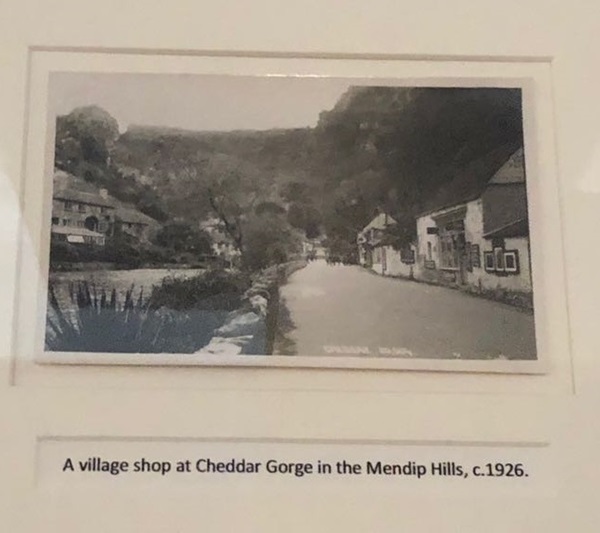
A photograph of Crispin Hall, 1986.
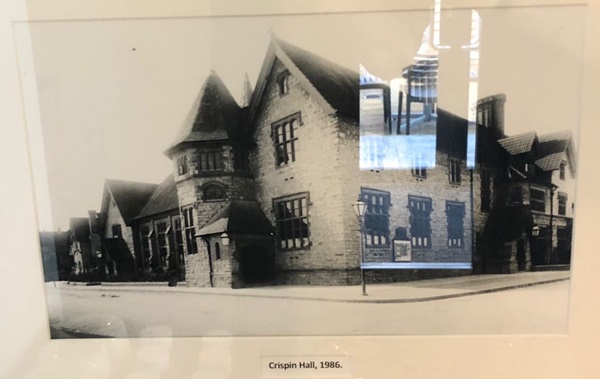
Vintage shoe items, including Clarks posters and feet measuring equipment.
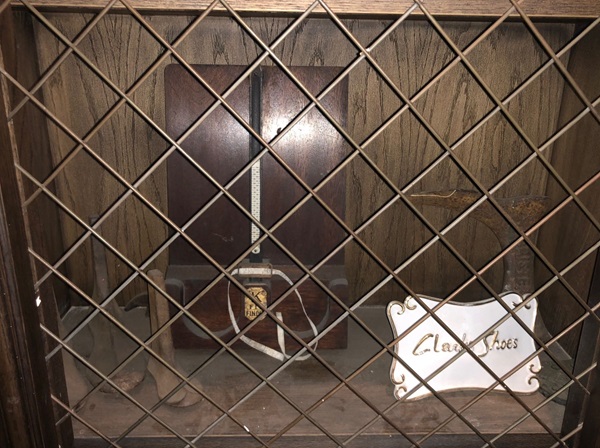
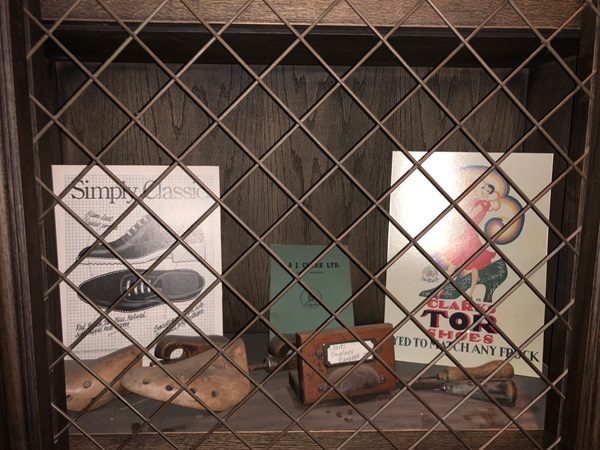
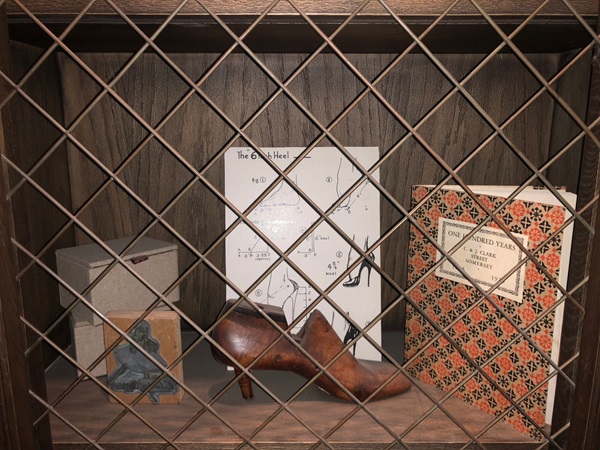
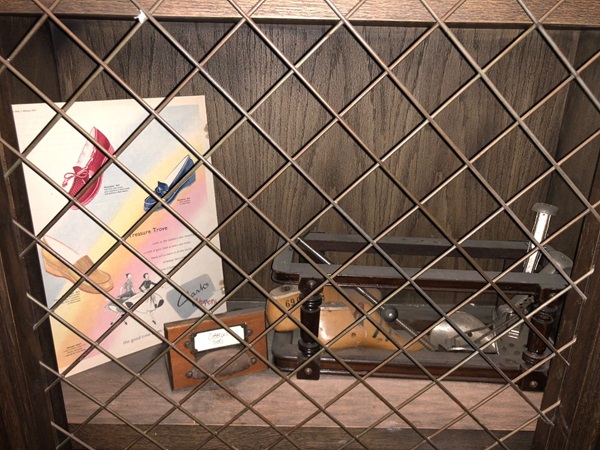
This pub has some interesting features, including a sewing machine table leg.
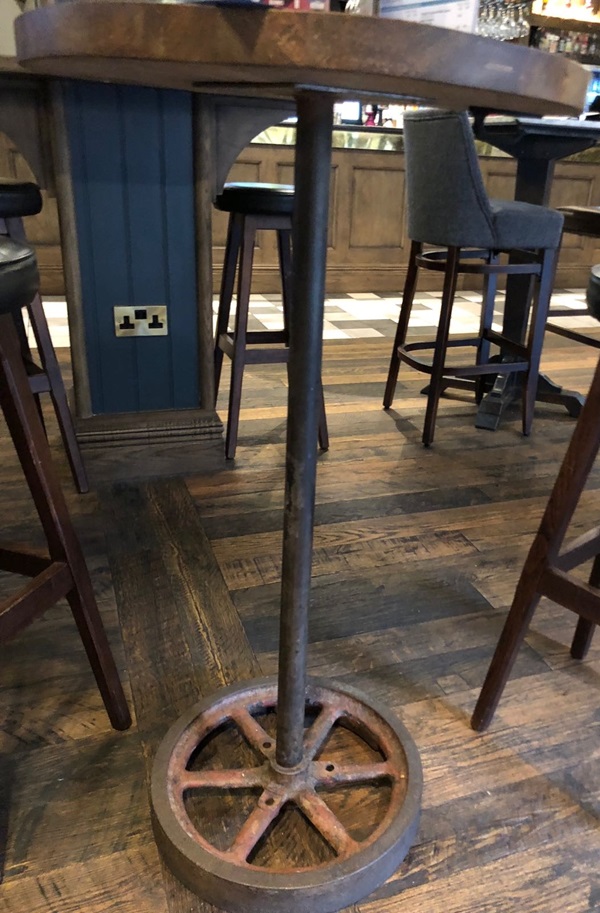
In 1876, twenty years after the introduction of Singer sewing machines on the production line, surprisingly only 80 percent of the footwear produced by C & J Clark had machine-sewn uppers.
An original cast iron shoe last forms the base of this table.
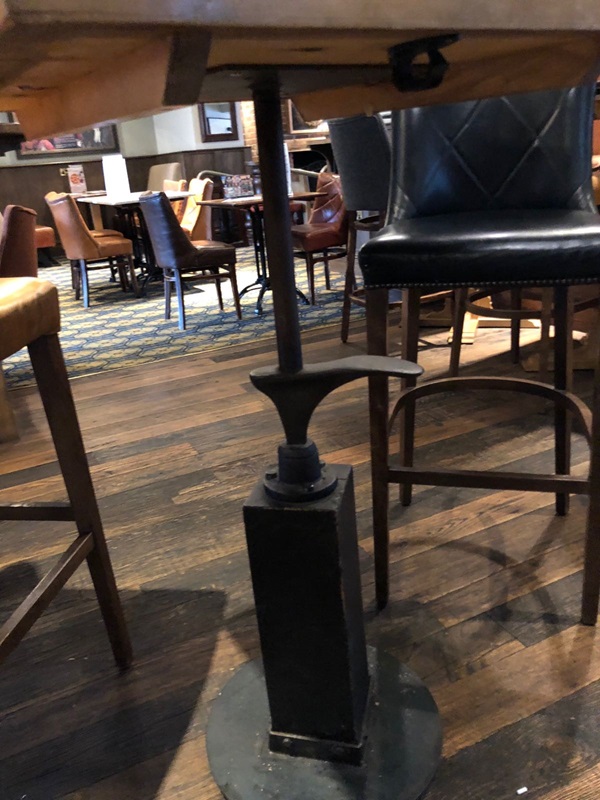
Original hardwood shoe lasts form one of the feature table bases.
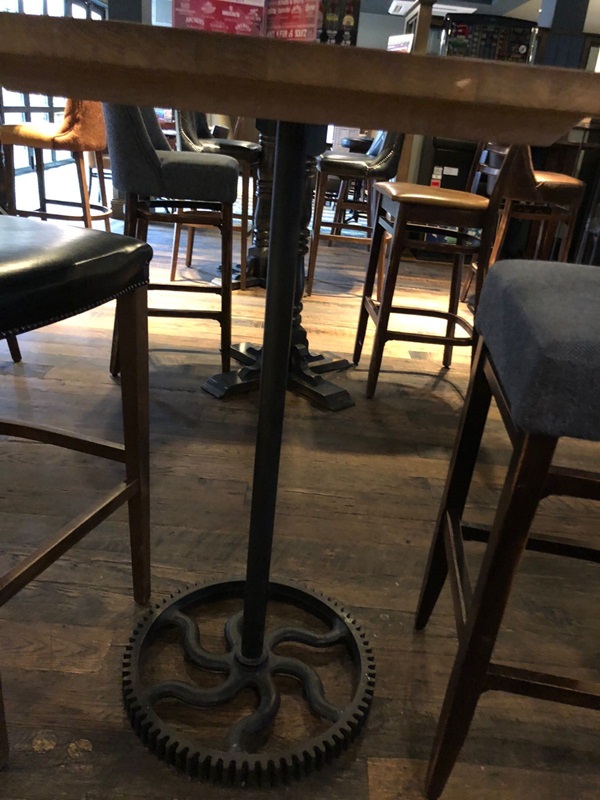
Today, wooden lasts are generally used only for bespoke shoe-making.
External photograph of the building – main entrance.
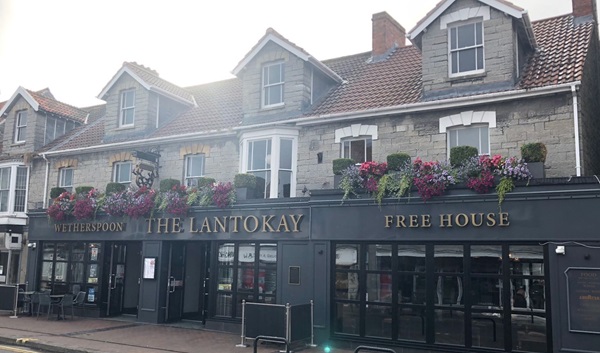
If you have information on the history of this pub, then we’d like you to share it with us. Please e-mail all information to: pubhistories@jdwetherspoon.co.uk